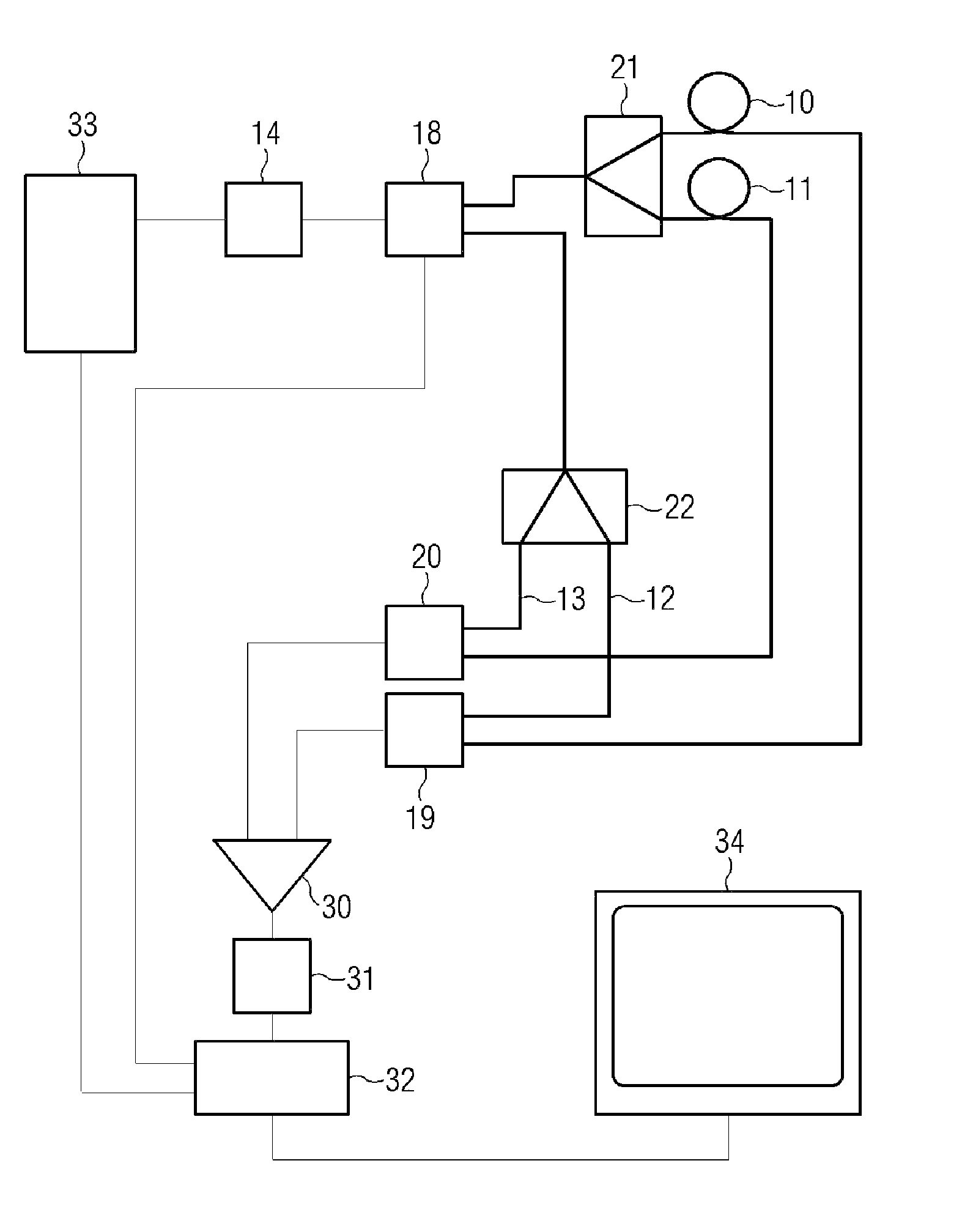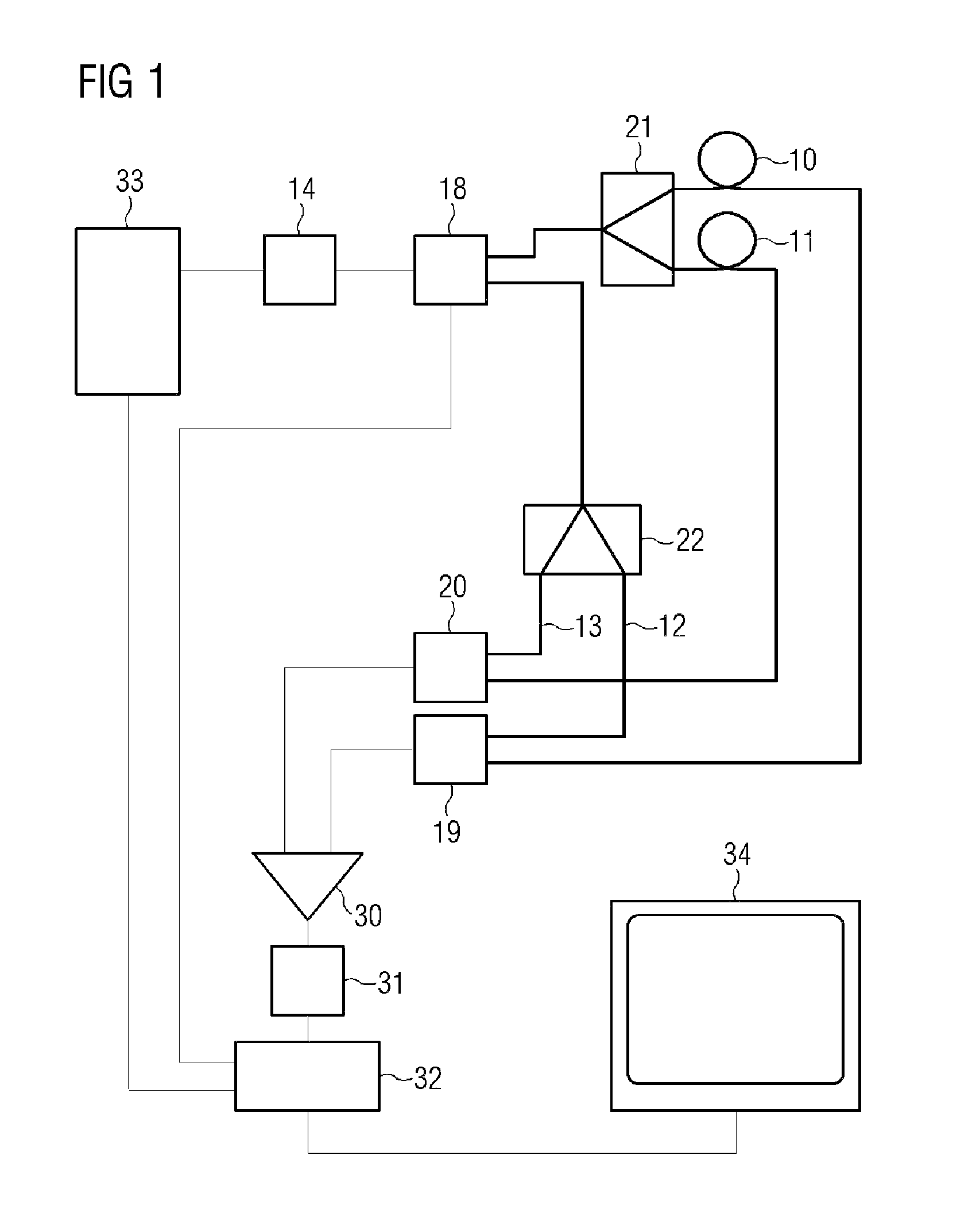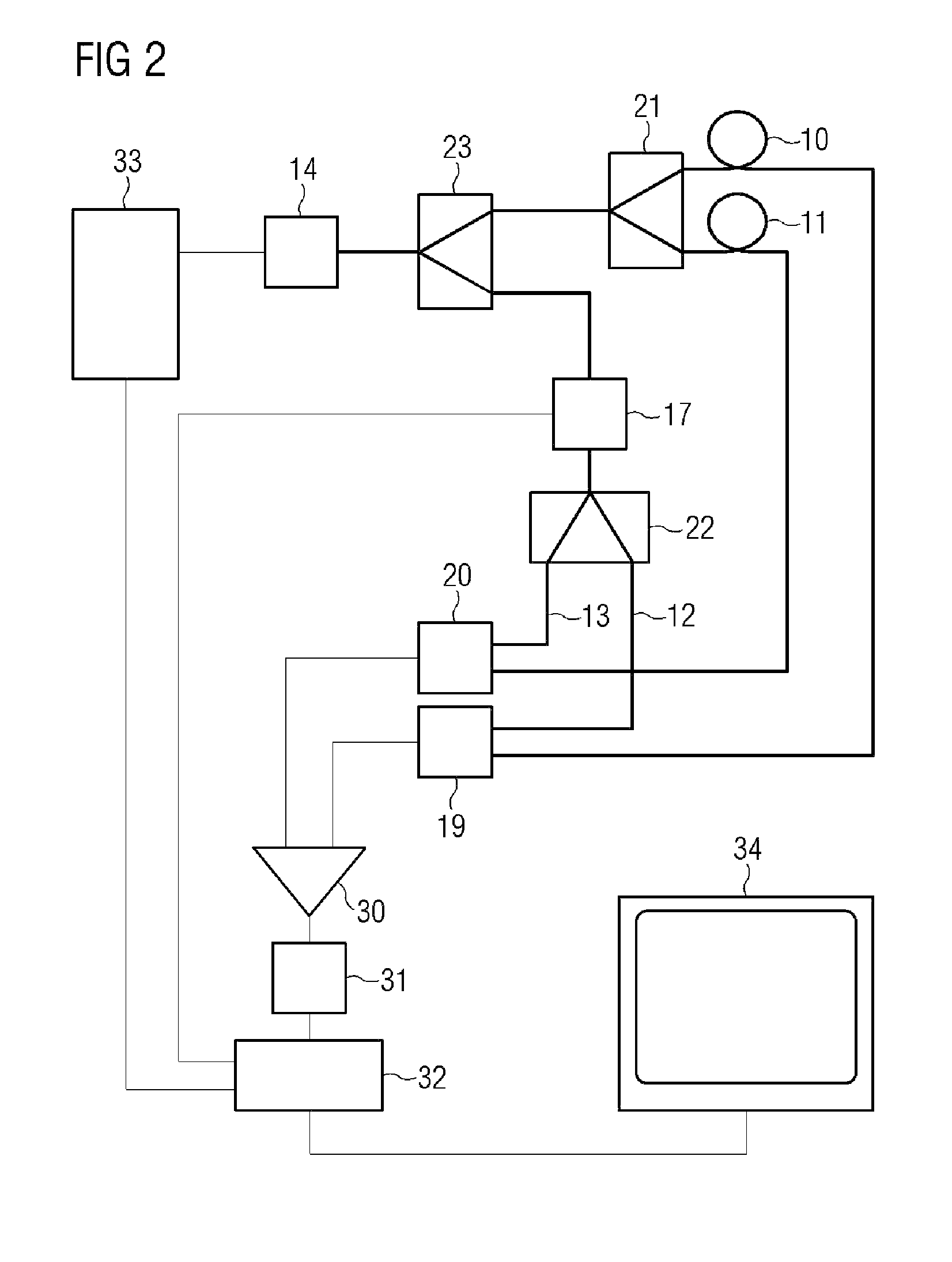POF strain sensor using phase measurement techniques
a phase measurement and strain gauge technology, applied in the field of optical sensors, can solve the problems of optical fiber-based sensors electrical or electromagnetic disturbances sensitive electric or electromagnetic sensors,
- Summary
- Abstract
- Description
- Claims
- Application Information
AI Technical Summary
Benefits of technology
Problems solved by technology
Method used
Image
Examples
Embodiment Construction
[0040]FIG. 1 shows an optical fiber sensor. A signal generator 33 generates a signal for modulating a first optical transmitter 14. The output signal of the first optical transmitter 14 is selectively supplied to a first Y-coupler 21 for the measurement path or a second Y-coupler 22 for the reference path via an optical changeover switch 18. The first Y-coupler 21 divides the signal into two parts for a first measurement fiber 10 and also a second measurement fiber 11. These two measurement fibers are preferably connected to a mechanical component in such a way that the two measurement fibers are deformed in opposite directions and are in this case approximately the same temperature. The output signal of the first measurement fiber 10 is supplied to a first optical receiver 19 and the output signal of the second measurement fiber 11 is supplied to a second optical receiver 20. The output signals of the two optical receivers are compared by means of a phase comparator 30. The phase d...
PUM
 Login to View More
Login to View More Abstract
Description
Claims
Application Information
 Login to View More
Login to View More - R&D
- Intellectual Property
- Life Sciences
- Materials
- Tech Scout
- Unparalleled Data Quality
- Higher Quality Content
- 60% Fewer Hallucinations
Browse by: Latest US Patents, China's latest patents, Technical Efficacy Thesaurus, Application Domain, Technology Topic, Popular Technical Reports.
© 2025 PatSnap. All rights reserved.Legal|Privacy policy|Modern Slavery Act Transparency Statement|Sitemap|About US| Contact US: help@patsnap.com



